What is sales enablement?
Sales enablement is the process of providing your business’ sales team with the right mix of tools, training, content, and knowledge to compete more effectively in a crowded marketplace.
The ultimate objective is to help marketing, sales and account management teams work together to sell more solutions to more right-fit clients - and do it all faster.
Why do B2B manufacturers need sales enablement?
Sales teams were once the big beasts of the contract manufacturing landscape. They prided themselves on their knowledge of the market and the tight-knit groups of companies they sold to. They knew their territories inside and out. The most effective salespeople didn’t need much marketing support to achieve their targets year after year.
But then things changed. The landscape altered. New opportunities emerged in electronics manufacturing, driven by surging demand in medical devices, automotive and other verticals. Fresh global markets opened up, but with them came new complexities and fierce competition.
A lone-wolf approach to sales became much less effective.
A new sales landscape emerges
For many contract manufacturers (CMs) - finding, accelerating and sustaining sales growth in a new business landscape became a major challenge.
Growing product complexity meant there were more people in each target organisation to persuade before a sale could be made.
At the same time, customers began retreating from direct engagement with sales teams.
In the age of digital, OEMs could research more effectively online and make important purchase decisions - without ever speaking to your sales team.
How B2B buying habits have changed
Gartner reports B2B customers’ buying habits are now more painstaking and analytical than ever - but they are also more difficult to track and control.
Prospects typically have numerous buying tasks to complete before they choose a B2B partner.
And the research shows most B2B buyers will revisit nearly every one of these buying tasks at least once before making a purchase.
The customer buying journey resembles more of a maze than a linear path, making workflows harder than ever to define and automate:
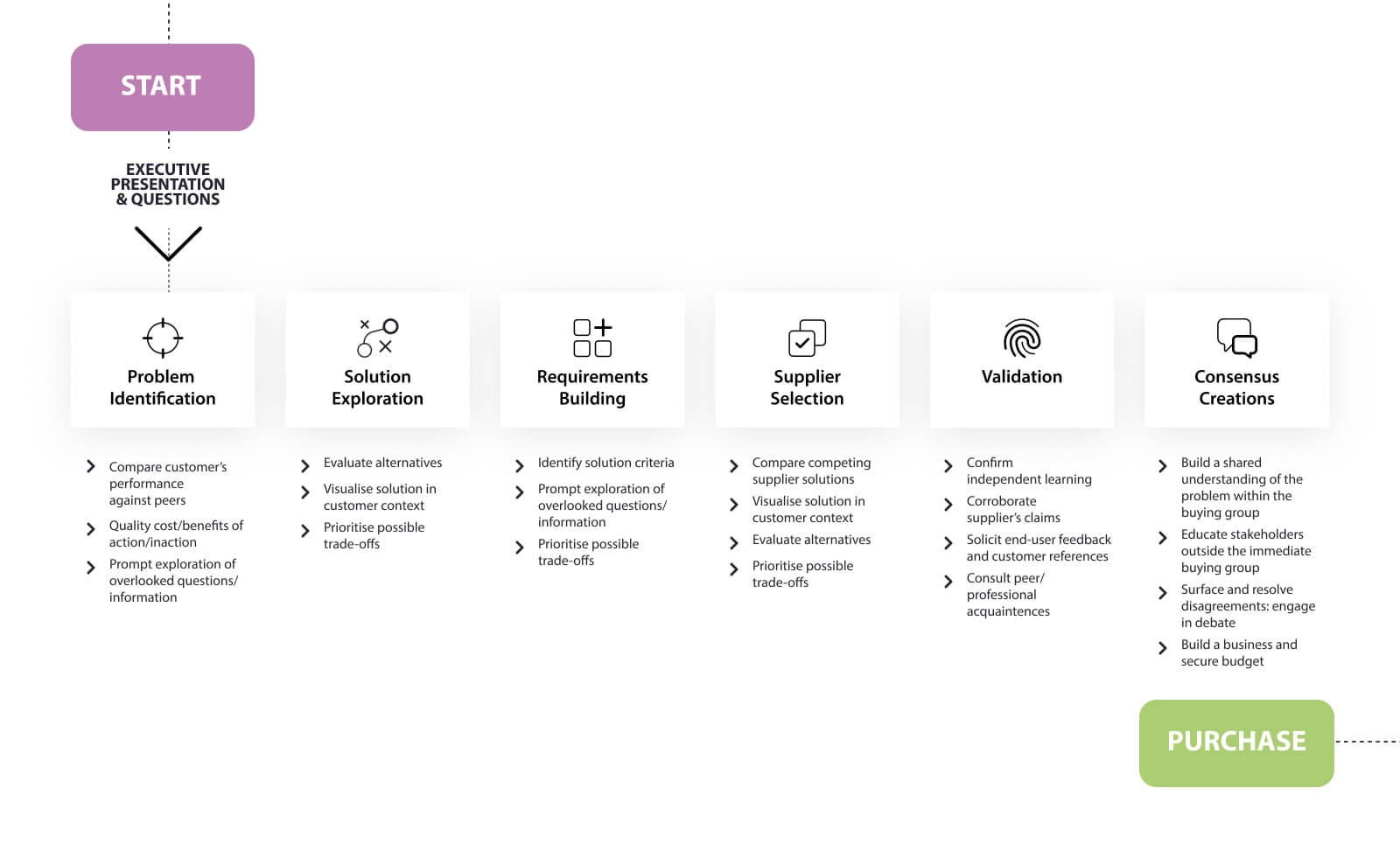
As they navigate their buying tasks, prospects rely heavily on different websites, peer recommendations and influencers to make their decisions. They seek and compare advice from different sources. They scroll socials, listen to industry podcasts, read business reviews and expert blogs - all before they ever talk directly to your sales team.
How does the content across your digital channels support prospects and customers in the ‘back and forth’ consideration of their options? How are you interacting with and helping them as they shift between buying stages?



In this new and complex business landscape, the ‘lone-wolf approach’ to sales operations has become much less effective. Marketing and sales teams must collaborate to find, nurture and convert more right-fit leads.
Why sales and marketing alignment matters in manufacturing
As sales cycles become increasingly complex, the need for closer collaboration between sales and marketing to improve sales performance has grown. But in industries like manufacturing, where traditional models of selling have prevailed, these functions are often still working in silos.
The result can be conflicting plans and priorities as teams compete for influence and budget.
Marketing teams complain they don’t have the sales intelligence to create the messaging and content to drive more effective and targeted campaigns.
Over half of all manufacturing marketers struggle with three things:
- 62% struggle with creating content for the buyer’s journey
- 58% struggle to align content efforts across sales and marketing
- 56% struggle to communicate internally among teams/silos
Source: CMI
On the other hand, sales teams complain they don’t have the collateral they need to close their deals and drive new opportunities.
In this environment, sales can become dismissive of marketing efforts and rely on self-generated sales materials to communicate with prospects. This wastes valuable sales resource:
Only 35.2% of a sales rep’s time is spent actively selling.
Marketing can be frozen out of discussions around sales strategy, deprived of the digital tools that could help them fuel the pipeline more effectively.
They can be left to run one-off campaigns, update websites and socials - and not much more.
With marketing and sales teams pursuing different strategies and competing for C-Suite attention and resource - the actual process of revenue generation can sometimes be forgotten.
"Sales enablement isn't just a buzzword; it's a strategic approach to aligning marketing, sales, and customer success to drive revenue growth."
Why sales need marketing - and why marketing needs sales
But research shows that only when sales are enabled by marketing can the full growth potential of a business be unleashed.
Businesses who have sales enablement strategies and tools in place are consistently more successful in building sales growth:
- 49% - win rate on forecasted deals
- 60% - higher customer retention rate
- 14% - increase in deal size
Source: Oracle
For those who get their automation and enablement process right, the rewards are great.
But how do you manage this process strategically and systematically?
Sales enablement reimagines the old sales and marketing relationship
In the old sales and marketing paradigm, sales was a linear process. A prospect entered the funnel and was handed over to sales after a set period of nurturing and qualification. Sales and marketing roles were clearly defined and separated. The sales and marketing role in that relationship was pretty much concluded when the deal was signed.
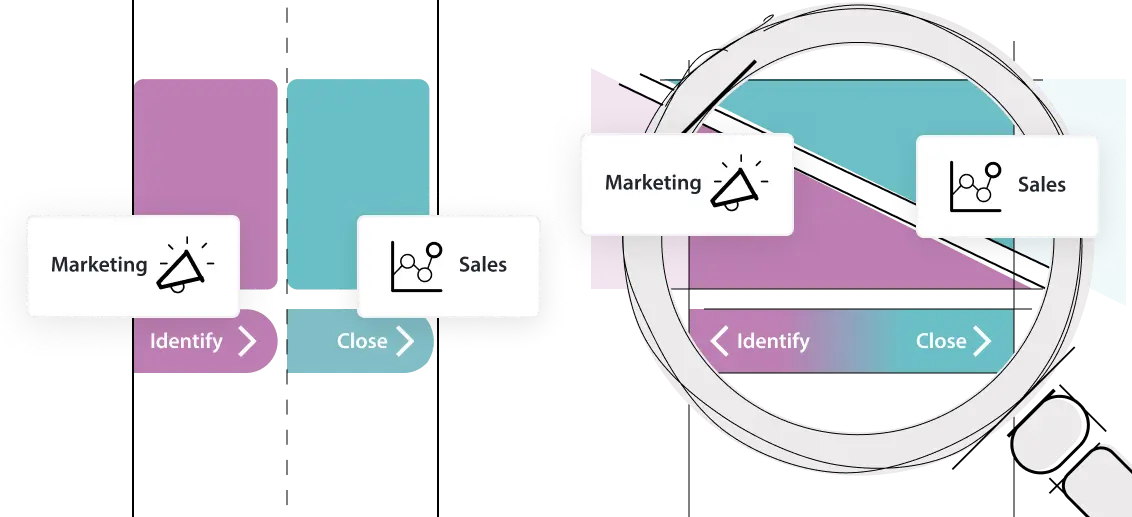
The sales enablement flywheel
But in the inbound and content marketing age, the sales process has become more cyclical and self-sustaining.
In this model, the linear pipeline is replaced with the sales flywheel -
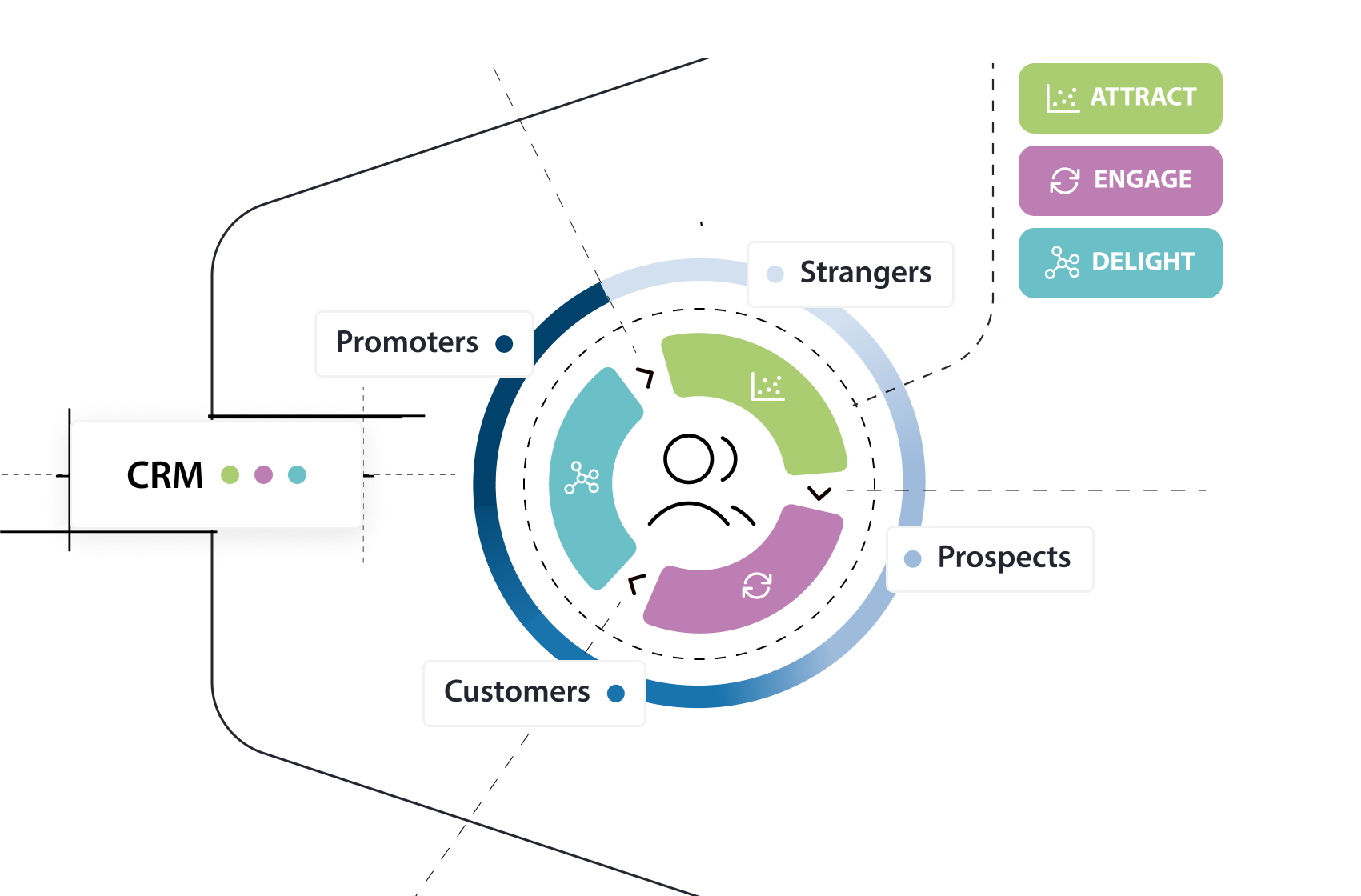
How to accelerate the flywheel through sales enablement
The flywheel reimagines customers as the very centre of your operations, with each department perfectly aligned and empowered by technology to serve them more effectively.
Closing deals is now the start, not the end, of the sales process.
With the marketing team facilitating ever-closer cooperation between them, every department in the business works together to support the sales function and build revenue momentum.
Together, they can:
- Help identify and attract more right-fit leads for the business
- Engage and convert more prospects
- Delight customers with the quality of their service - and sell more to them
How sales enablement becomes revenue enablement
In this model, sales and account management teams continually share their insight and expertise to feed into lead-scoring strategies, workflow definition and content creation process.
All these activities help to secure new revenue opportunities through a relentless focus on customer satisfaction.
A stream of content ideas and case studies powers discovery by new clients and more effective cross-selling.
The quality of your market insight and support turns existing customers into powerful advocates on your behalf, driving further revenue growth.
That’s the theory, anyway. But how do you make sales enablement actually happen?
The essential building blocks of a sales enablement strategy
Every great sales enablement plan needs to be built on solid foundations. Everyone in the business needs to ‘buy into’ the approach and then commit to ever-closer alignment through process and technology.
1. Sales and Marketing Alignment
Your teams must understand the benefits of working together and be committed to doing so.
Creating formal processes for target setting and knowledge sharing between sales and marketing is vital. After initial cross-departmental meetings to establish goals, ensure you schedule regular meetings to plan campaigns and review results to optimise the process further.
2. Persona Development
Unless your teams agree on your ideal customer profile - and the buyer persona you are selling to, you won’t be able to create the content that will drive more discovery and engagement. Develop detailed customer personas and ensure that sales strategies are aligned with these personas. Understanding customers' needs, challenges, and decision-making processes is key to effective selling.
"Sales enablement is not just about arming sales with content; it's about arming them with the right content for the right stage of the customer's journey."
Tamara Schenk
3. Sales Enablement Content Strategy
Content creation is a key part of any sales enablement strategy.
Your team needs to have formal processes to identify content gaps and areas where you can demonstrate insight, expertise and leadership to customers and potential customers.
Use your buyer personas to understand when and where prospects search for information online, so you build the content they need in the format they want.
A comprehensive content strategy maps content opportunities onto the different stages of the buyer’s journey. It identifies where and how different content can be deployed to keep customers engaged and moving through the sales cycle.
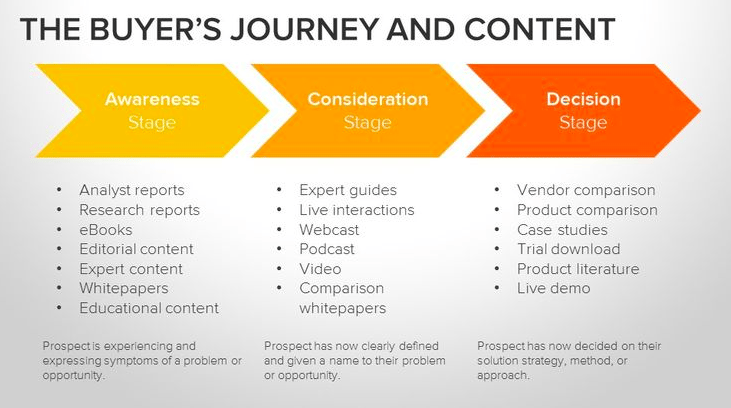
Source: HubSpot
What media does your ideal customer consume? Whose views and help do they seek out at each stage of the buyers’ journey?
Technology can be deployed to give your business useful insights for your content strategy:
Build keyword target list for organic strategy using tools like Moz and SEMrush.
Tools like Sparktoro can show you the content/channels your customers favour.
AI tools can enable faster competitive analysis, content ideation and generation.
MarketMuse can help identify the topic clusters for key pillar pages.
ChatGPT and Perplexity AI can help you research, ideate and write more rapidly.
The more you can bring your customer research to bear on your content creation process, the better chance it has of resonating with your audience and converting visitors to customers as they move through the sales cycle.
Developing a content strategy mission statement can help everyone in the business understand the purpose of your content creation.
Content expert Andy Crestadina has done a lot of work in this area. He demonstrates how companies can lever strategy and, more recently, AI technology to accelerate and improve content production. Watch his excellent introduction to AI in Digital Content Marketing for a review of the most impactful strategies to adopt.
But bear in mind that in the world of generative AI, pieces of original content packed with insight from your internal team of experts can represent unique value for your customers. Focus your teams on creating content that speaks to their particular pain points, through the lens of your unique experience and expertise.
83% of B2B marketers try to differentiate from the competition by content quality.
72% of B2B believe covering untapped topics/stories improves content quality.
Source: CMI
4.Your CRM
At the heart of every successful sales enablement process is the CRM software that integrates and accelerates your teamwork to serve customers and reach revenue goals more efficiently.
The right CRM software is a central hub for managing and analysing customer interactions and sales data. By integrating seamlessly with various platforms, including CMS, ERP, email and social media, it can eliminate data silos and drive automation.
CRM tools can automate key processes like lead scoring and deal tracking, which can streamline the sales cycle and free up time for sales teams to focus on engaging with prospects and closing deals.
The ability to track and analyse every interaction with customers through a single CRM system enables businesses to refine their sales strategies, create personalised experiences, and ultimately, convert prospects into loyal customers more efficiently.
The right CRM software is not just a tool for managing customer information; it's a strategic sales enablement platform that enhances collaboration, drives efficiency through automation, and provides valuable insights, making it indispensable for any effective sales enablement strategy.
5. Sales Enablement software
Different kinds of software can be deployed to help you integrate your sales team and process more efficiently and effectively with the rest of your operations:
HubSpot Sales Hub: This is an all-in-one sales enablement tool that helps with organising sales activities. It's good for tracking emails, scheduling meetings, and managing customer relationships. It's part of a bigger set of tools that includes marketing and customer service.
Salesforce Sales Cloud: This is a flexible tool for managing customer information and sales activities. It's great for businesses of any size and can be customised to fit different needs. It helps with tracking leads, managing sales opportunities, and forecasting sales.
Seismic: This tool is excellent for managing sales documents and presentations. It helps sales teams find and use the right materials for each customer. It also tracks how effective these materials are in making sales.
Highspot: Known for organising sales content and giving advice on sales strategies. It helps sales teams find the right materials quickly and offers suggestions for sales pitches. It also provides detailed reports on sales activities.
Showpad: This combines document management with training for sales teams. It's great for interactive selling and understanding how customers interact with sales materials. It also offers sales training to improve sales skills.
Outreach: This tool automates communication with customers across emails, calls, and social media. It helps manage customer interactions and gives insights to improve sales methods.
Zoho CRM: This is an affordable and user-friendly sales enablement tool for automating sales processes and managing customer information. It's especially good for smaller businesses and includes features like managing sales pipelines and analysing sales data.
MindTickle: Focused on training sales teams, this tool offers onboarding, short learning sessions, skill development, and coaching. It's designed to keep sales teams knowledgeable and skilled.
A 10-step guide to building a sales enablement process
Here's a step-by-step guide to help you develop a plan that aligns your business goals and empowers your sales teams in cycles of continuous improvement.
1. Define Your Objectives
Set clear revenue and sales goals around which your teams can align.
Start by identifying what you want to achieve with your sales enablement strategy. This could include increasing sales productivity, shortening lengthy sales cycles, improving win rates, or enhancing customer engagement.
2. Understand Your Current Sales Process
Analyse your current sales process. Identify stages where sales reps struggle or where deals often stall. Understanding these pain points is crucial for developing a sales strategy that addresses specific needs.
3. Collaborate with Sales and Marketing
Work together to ensure that marketing materials are relevant and useful for the sales process. This collaboration should also focus on developing lead qualification and nurturing strategies.
4. Develop Relevant Sales Content
Create content that supports the sales process. As described above, this includes developing sales scripts, email templates, case studies, product sheets, and educational materials that help sales reps engage prospects and customers effectively.
5. Implement Training and Sales Coaching
Regular sales training and coaching are vital. This should cover product knowledge, sales skills, and the use of sales enablement tools. Role-playing and scenario-based training can be particularly effective.
6. Choose the Right Tools and Technology
Configure the sales enablement tools that streamline the sales process. This will include CRM systems, content management tools, sales intelligence software, and analytics tools, as well as tools for automating repetitive customer service tasks. You should also look to AI to assist with your content ideation and generation strategy. Ensure these tools are user-friendly and integrate well with your existing systems.
7. Measure and Analyse Performance
Establish key performance indicators (KPIs) to measure the effectiveness of your sales enablement strategy. Track metrics like sales cycle length, conversion rates, and average deal size. Use these insights to refine your strategy over time.
8. Gather Feedback and Iterate
Regularly solicit feedback from the sales team on what’s working and what’s not. Use this feedback to make continuous improvements to your sales enablement strategy.
9. Foster a Culture of Continuous Learning
Encourage a culture where continuous learning and development are valued. This includes staying updated on industry trends, competitor activities, and new sales methodologies.
10. Ensure Executive Buy-In
Remember, a successful sales enablement strategy is not static; it should evolve with your business, market trends, and customer needs. Regular review and adaptation are key to maintaining its effectiveness.
"Sales enablement is not a one-size-fits-all approach. It's about tailoring your support to meet the unique needs of your sales team and your customers."
Jim Ninivaggi
But beware! The road to sales enablement nirvana is never easy.
Common reasons why sales enablement fails
Despite sales enablement becoming increasingly important and popular, successful execution is anything but simple. Even with hundreds of useful tools.
Here are some of the most common reasons why organisations might be failing to make their sales enablement strategy work as intended.
Failure #1 – Mistaking the role of sales enablement
Sales enablement will be unique to every company. It’s a business strategy – not a product or checklist. It needs to be defined and applied to your organisation sensitively and expertly. This job is not for an unseasoned sales team leader without proper, tailored advice.
Failure #2 – Choosing the wrong person to lead sales enablement
Sales enablement success needs a sales enablement leader, who should also be a champion and a strategist – not a tactical project manager.
Failure #3 – Skipping or taking shortcuts in the set-up
It isn’t easy to thoroughly map the customer lifecycle and sales cycle. You need to perform a forensic assessment of ideal customer(s), personas, customer journeys and more whilst paying attention to considerations throughout the sales journey and for multiple stakeholders.
Failure #4 – Tactics before strategy
It’s easy to focus on execution ahead of strategy. For your sales enablement strategy to succeed, you must work through tough questions and identify, challenge and agree on objectives and meaningful KPIs. You need to be 100% ideal customer-focused. You also need a go-to-market strategy that is stress-tested.
Failure #5 – Content is poor
Sales enablement draws on inbound marketing, which requires appropriate, timely, segmented, and better content than your competitors.
Failure #6 – Insufficient buy-in between departments
You cannot force alignment between sales, marketing, and other departments. This is an issue for senior management to solve. Sales enablement requires the total buy-in of marketing, sales, operations, service, and HR, to name a few departments.
Failure #7 – Insufficient technology stack
To get around the common observation that sales team members either cannot find appropriate sales content or don’t know it exists, you need a central repository, CMS and CRM that are intertwined and use a smart tech stack that simplifies and integrates the tools that you need most to deliver the objectives. HubSpot, Salesforce, Playbook and other sales enablement platforms are there to solve the technology stack problem.
Conclusion
“The price of not changing can be vast. B2B companies that do not cooperate closely across their organisations may suffer because of poorly executed customer buying journeys, misaligned objectives, misallocated resources, and poor team morale. They can find themselves unable to learn from performance. Customer alienation, loss of market share, and slowed or no growth will follow.”
- Boston Consulting Group
Sales and marketing teams have been siloed for too long in many manufacturing companies.
The result has been conflicting priorities, a focus on short-term sales tactics and flat-lining growth.
Many companies lack the digital tools to align and automate their sales and marketing efforts.
But, crucially, they can lack the strategic plan that will help them agree on goals, share expertise, and collaborate in a structured way to deliver sustainable revenue generation.
"In the world of sales, knowledge is power, and sales enablement is the key to unlocking that power."
Deb Calvert

.jpg?width=1414&height=799&name=buyers-journey%20(1).jpg)
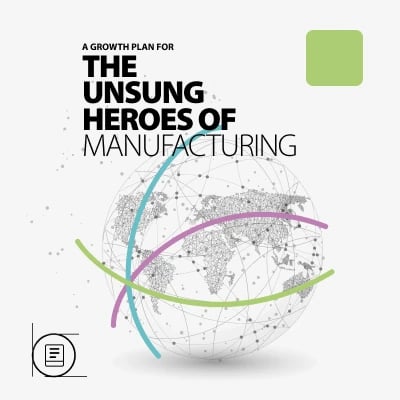
.png?width=800&height=800&name=A-review-of-the-seven-common-mistakes-title%20(1).png)
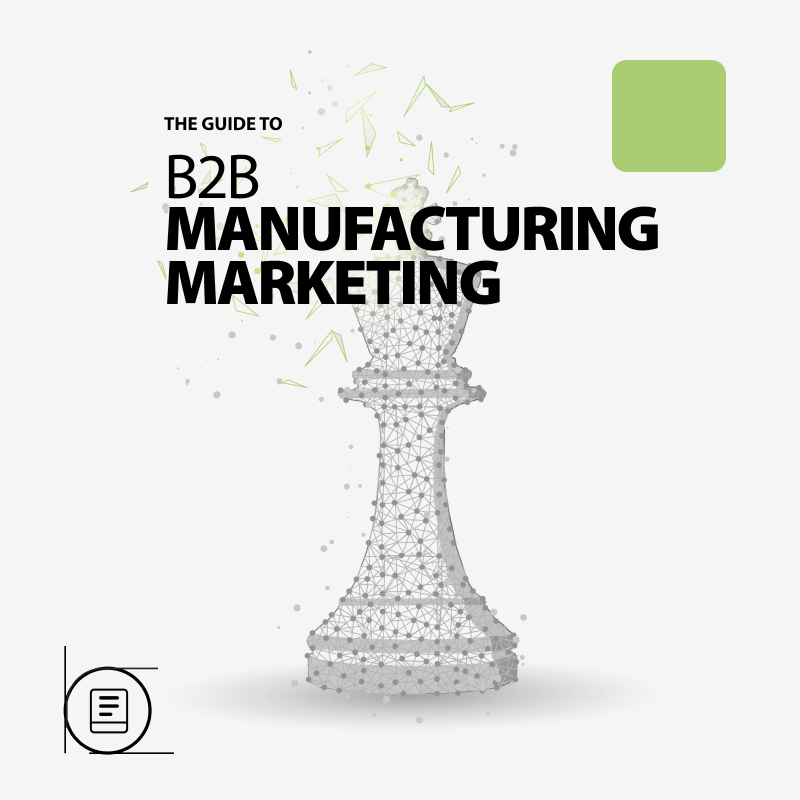
.png?width=400&height=400&name=B2B%20Content%20Research%20Cover%20test1%20(1).png)

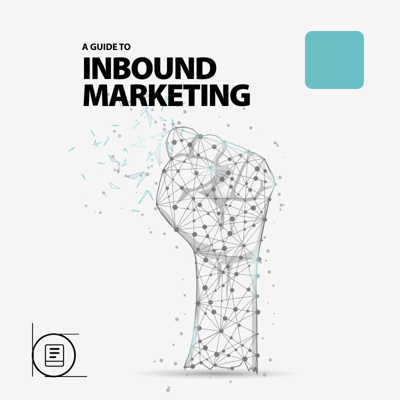
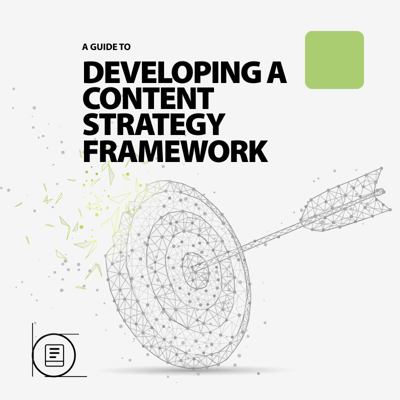
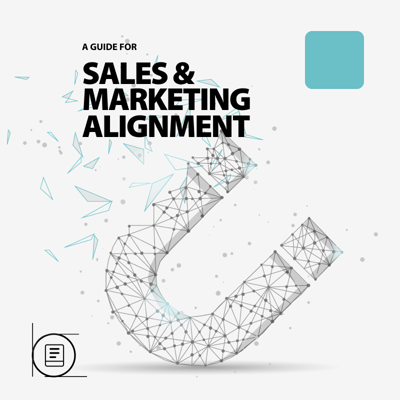
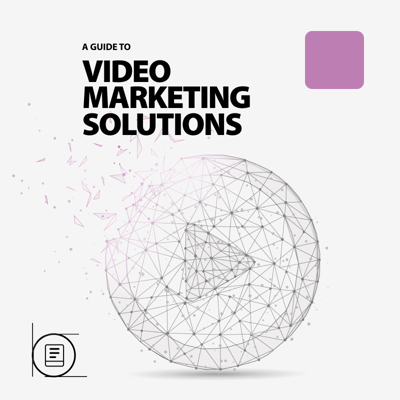
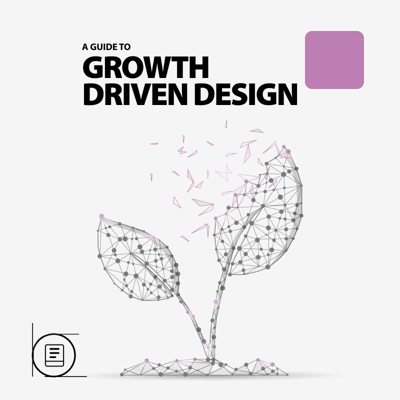
.png?width=400&height=400&name=CRM%20Optimisation%20(1).png)
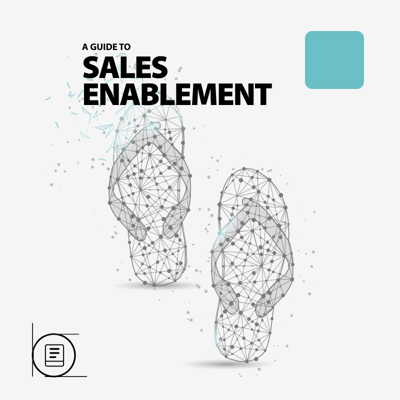
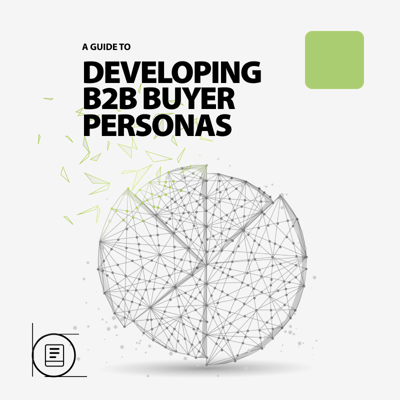
.png?width=800&height=800&name=7%20Threats%20to%20Contract%20Manufacturers%20(1).png)